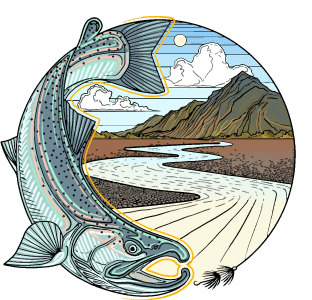 Why is a fly that was awesome in 2001 not awesome today? Do we as anglers lose faith in them and not fish them as hard? Or do we naturally just prefer the new and exciting over the old and proven. Or in some cases, is it the fish who decide for us? Do they no longer want to get down with the bug?
Why is a fly that was awesome in 2001 not awesome today? Do we as anglers lose faith in them and not fish them as hard? Or do we naturally just prefer the new and exciting over the old and proven. Or in some cases, is it the fish who decide for us? Do they no longer want to get down with the bug?
Like everything else, flies have a life span. Some flies come on strong, have a big year or two, and fade off into obscurity. Others may have a 10 year run of glory before being relegated to the dusty sale bin. Whether their effectiveness goes down or they just lose favor with anglers, patterns that everyone was excited about gradually stop showing up on the river.
At Alaska Fly Fishing Goods, we see a lot of flies that are just as good as ever, but are the victims of being overshadowed by the new hot thing. Sure, the Dolly Llama has ruled Alaska fly fishing the last few years and it is an unbeatable coho fly, but does that mean that old standby patterns like Coho Kryptonite and Starlite Leeches don’t fish well any more? Hardly.
So, in no particular order, here are 7 Forgotten Flies that still fish like a beast but seem to have fallen out of popularity.

Starlite Leech - This one really makes us scratch our heads.The Starlite Leech has accounted for so many salmon it is unreal. And for a lead eyed fly it is one of the easiest casting flies around. Plus, if you have a variety of colors, you can get on a pod of salmon and fish nothing but Starlites until the school shuts off. Imagine a pool full of coho: Start with the Pink Starlite Leech, you’ll get 4 or 5 before they shut off it. Then move to the Purple with Red Head and you’ll get 3 more. Finish up with the Black with Green Head and you’ll get the last 2 biters in the school!

Coho Kryptonite - The coho fly trend of late has been heavy, heavier and heaviest. These new school mega bombs fish great but casting them is a chore to say the least. Especially later in the day as fatigue sets in. Your cast gets a little sloppy, you flop a couple of back casts and then drill yourself in the back of the head…... Enter the Coho Kryptonite. It is totally unweighted and tied with materials that don’t absorb waters. It is as light as an Alaskan salmon fly gets and is effortless to cast. If the fish are deep use a sink tip. If not just chuck it on your floating line. Its profile, flash and prime colors make it a huge winner. The Coho Kryptonite has accounted for some massive fish over the years.

CH Alaskabous- When the Alaskabou first came out it was a quantum leap forward in Alaska patterns. Up to that point, pretty much every salmon patterns was a version of a bucktail streamer or an oversized wooly bugger. By taking marabou and wrapping it around the hook shank to create a light fly with incredible movement, salmon fishing got taken to the next level.
Alaskabous are still terrific flies. Easy to cast, tie and fish, the Alaskabou deserves a spot in your salmon box. We especially like them tied with a conehead which gives them a slight jigging action and a bit of flash. Some of the best colors are Popsicle, Kandy Kane and Aleutian Queen.
Moal Rhoid - Derek Fergus’ Moal (Mother Of All Leeches) series of flies lead to the whole “strung out” fly revolution. Great action in the water and without the long hook shank they had much better fish landing qualities. The Moal Rhoid is a medium sized flesh fly with a small bead tied in the back. This combo drives rainbows and Dollies crazy and it as effective today as ever.
McCune Sculpin - There are some super tricked-out sculpins out there these days. Coneheads, sculpin helmets, trailing hooks, 3-D eyes, and the list goes on. And without a doubt they fish well. But one of the original sculpin patterns that crushed it is still a killer fly. McCune’s Sculpin is simple, easy to cast, and racks up the trout.
Thunder Creek - Yeah, these have been around forever, but the original sparse fry pattern is as good as ever. If you look at a salmon fry in the water, they are almost translucent. To get a realistic imitation you need a fly that doesn’t have too much going on. When less is more, the Thunder Creek is the gold standard.





When guiding the salmon fry hatch in Iliamna area, Thunder Creeks trimmed down to just a half dozen strands of bucktail worked great on super selective rainbows.